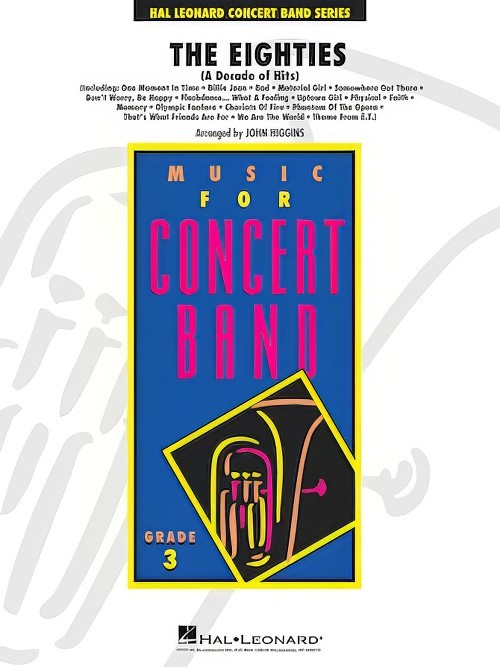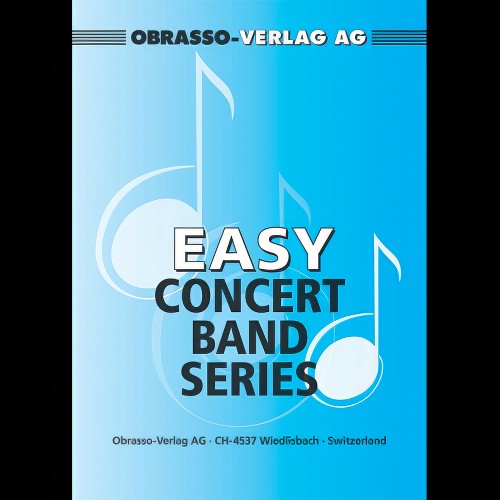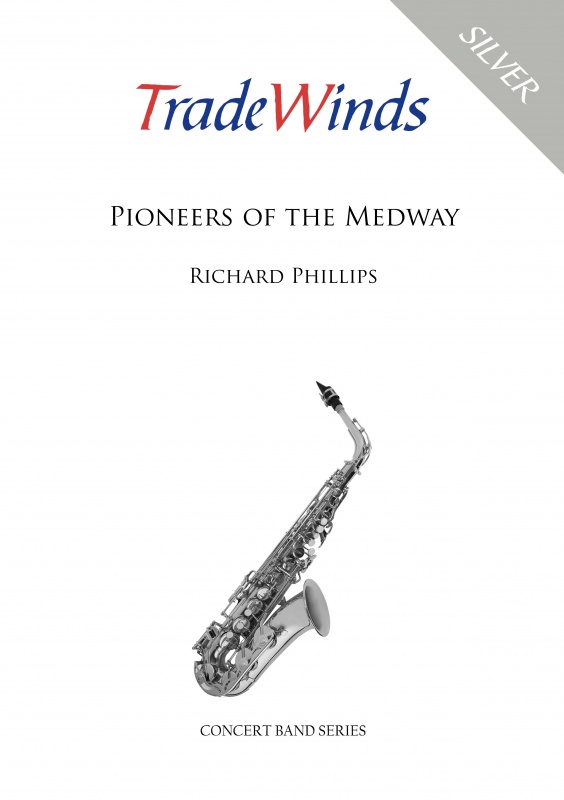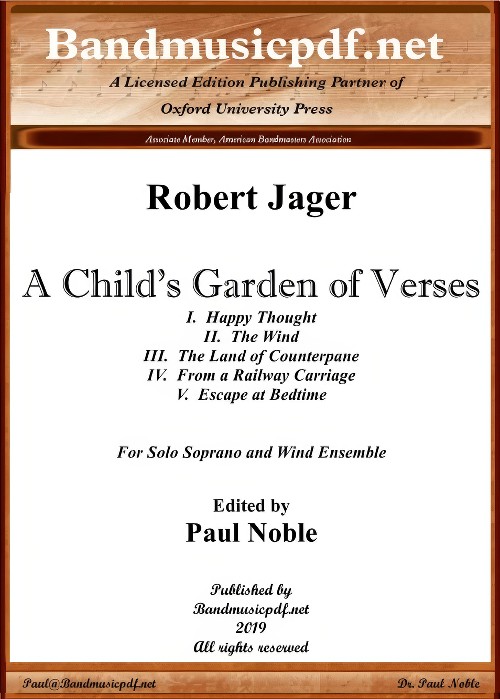Results
-
 £76.99
£76.99The Eighties (A Decade of Hits) (Concert Band - Score and Parts) - Higgins, John
Journey through the amazing 80's with this exciting musical synopsis. The hits, the fads, the shows and events are here to entertain all ages! Includes: Chariots Of Fire, Billie Jean, Bad, Don't Worry, Be Happy, One Moment In Time, Faith, Material Girl, Memory, Flashdance, Phantom Of The Opera, Uptown Girl, E.T.,Physical, Olympic Fanfare, That's What Friends Are For, We Are The World, and Somewhere Out There.
Estimated dispatch 7-14 working days
-
 £72.20
£72.20Pop Classics (Concert Band - Score and Parts) - Woodfield, Ray
This work is for Concert Bands with a reduced number of playersIncludes: Y.M.C.A.; A Groovy Kind of Love; Crocodile Rock; One Moment in Time
Estimated dispatch 7-14 working days
-
£102.99
Classic Pop In Concert - James Mark
Helmut Lotti's popularity began many years ago with his Elvis imitations. In the meantime, he has become internationally renowned and sold millions of CDs. At the moment, he is probably the most well known Flemish artist of all time. Filip Sandras has composed a medley of songs from one of his shows. These are 'La Adelita', 'Suspicious Minds', 'Sten'ka Rasin' and 'House of the Rising Sun'.
Estimated dispatch 7-14 working days
-
£159.99
Fantasia Per La Vita E La Morte - Bert Appermont
The mystique surrounding life and death formed the starting point of this composition. I wanted to write a work without a story, mixed up in a kind of musical quest for a new world of sound, original rhythm sequences, melodies filled with suspenseand distinct orchestral tones.The indirect cause was the birth of my first child which took place during this time, followed by the death of a close family member. At such a moment you experience just how close life and death are to each other, anddespite one being the antithesis of the other, they are incredibly similar. Both radical events are passages into new worlds and have great emotional impact. Moreover, the work was commissioned by "New Life", an orchestra that lost one of itsmusician in a plane crash, which also led me to believe that this approach would be appropriate.I would prefer not to comment on which passages in the composition concern life (birth) and which refer to death. It seems to me that it is moreinteresting to question traditional conceptions and leave it open for the listener. If you think that a passage is about birth, and this idea then shifts, it is this that raises fascinating questions, on both a musical and metaphysical level.Music isin an indirect but incredibly persuasive way in which to express the endless striving and seeking of mankind. Music can even touch eternity, as it were, and give us the feeling that we can transcend death. This endless search (and also longing) canbe heard throughout the work; as much in the sound fields and accent shifts in the first part as in the enormous tension curves and compelling themes of the second part. The semi-tone functions in this way as a guide or something to hold on to,running through the whole work and upon which much of the musical material is based. Traces of profound love resound with quiet simplicity in the slow section's melodious solos, after which the work contemplates life and death one last time, musesupon joy and sadness, on the possibilities and limitations of people and on the why of all things.I would like to dedicate this work to my dearest daughter Paulientje, to Meterke and to Johan de Jong of the "New Life" orchestra. May it fare themwell, here or in another dimension...
Estimated dispatch 7-14 working days
-
 £193.20
£193.20CASTRVM - Lionel Beltrán-Cecilia
CASTRVM is a symphonic episode inspired by four of the main civilizations that have coexisted over time in Ulldecona's Castle. With its melodies and sound effects, the composer tries to transport the listener through a trip to four uninterrupted movements, from the beginnings of this small settlement, creating a natural atmosphere recreated by the voice and the singing of birds to take us into the history with the first inhabitants, the Iberians, giving strength to the introduction of the composition, to move on to the time of the Andalusians, which with a melody in the form of a dance marked by percussion will transport us to take a walk in the surroundings of its circular tower. Next, and with strength, we arrive at the medieval and Christian period, marked in the score by the brass instruments, in this fragment we find moments that take us into the church of "Santa Mara de los ngeles", with melodies that evoke resonance and pomposity, continuing until we find the immense square tower, symbol of the fortress and homage, finally used as a prison and arsenal of those times. Then, there is a small slow march that will move us to some measures of strong stridency to finish with the whole section of low brass having its great moment of prominence, down to we reach the last part, Qna, a name that is recited during the musical piece and one of the names given in the past to the area that could be seen from the castle, where the change of location of the new town is recreated leaving the castle site, but always looking at it with respect and admiration as at the beginning of what is now the current Ulldecona, in this part, the composer plays a bit with a very well-known and significant melody for the inhabitants of Ulldecona, the "Jota Vieja", first making a reflex effect of all its melody and then only with the first six notes of this one, which builds a bridge until reaching the march and, later, the grand finale of this symphonic episode. The work was commissioned by Ulldecona Town Council and the Ulldecona Music Band, led by its conductor Joan Nadal i Girona, to commemorate the 800th anniversary of the donation of the Town Charter of Ulldecona "the old" (1222-2022), as part of the PATRIMONIUM 20.22 programme, "La Banda (Sonora) del Castell" (The soundtrack of the Castle).CASTRVM consists of: I.Iberians: stone and ironII.AndalusiansIII.The square tower: fortress and homageIV.Qna
Estimated dispatch 7-14 working days
-
£149.99
Jello, The Colours Of My Soul - Ben Haemhouts
Jello...The Colours of my Soul is an assignment that was written to be a lasting memory of the untimely, dramatic death of a young child. The work came about due to various conversations between the father and the composer whereby the final resultmust be seen as an attempt by the composer to musically translate the feelings of the parents.The first part of the title, "Jello", is a combination of the names of the two children of the commissioner, namely Jelle and Lobcke, and "the Colours of mySoul" are the colours of the soul of the parents who despite the loss of one of their children, continue to cherish their two children. The introduction provides the atmosphere of grieving for the loss, whereby use is made of pure fifths in order toportray the solidarity with nature, as we are familiar with in symphonies by Bruckner. A little later a bit of the first theme is suggested, which develops into a real funeral march.The Dies Irae, as this occurs in Berlioz's Fantastic Symphony (F, E,F, D, E, C, D), forms a leitmotiv through the entire work in order to symbolise the constant battle between life and death.Shortly before the storm-passage, (where a wind machine is used) which announces disaster, fragments from children's songs areplayed to the accompaniment of a rising choir piece from behind the stage, which strengthens the imminent confrontation with death.After the introduction of the two themes in the long introduction, a quick passage follows in which all kinds ofbeautiful memories are recalled. There is story telling, laughing, and dancing. One of the previous children's songs is also cited. The Dies Irea is heard once again, this time short and fast.Bit by bit happy elements are steadily distorted untilseriousness breaks through again, like an unavoidable and unstoppable evil. The entire piece becomes evermore stirring, as if a big climax will follow. At this moment a very long fermata makes a sudden end to the hysterical allegro. The crucialmoment in the work follows...How does one deal with something as tragic as the death of one's own child? Does one mourn for what no longer is and what never will be? Or does one try to cherish the beautiful moments and continue to live with thesecolourful memories?A subdued, dignified choir piece captures the beautiful memories and ends in a positive, hopeful tone.
Estimated dispatch 7-14 working days
-
 £64.95
£64.95Pioneers of the Medway (Concert Band - Score and Parts) - Phillips, Richard
The Salvation Army Band in my home town of Chatham, part of a conurbation of 5 towns in the South East of England known as the Medway Towns, celebrated their 135th anniversary in 2016 and this piece was composed as part of those celebrations. I suppose to some degree all composers and lyricists are pioneers, always striving to write something different and new. Well, there has been a number of 'creatives' who at one time or another have been members of the Chatham Corps and this piece includes songs from some of those. The opening motif is based on the 1st 3rd and 5th notes of the scale and after a short 'fanfare-like' introduction the tune of Blacklands (Ray Steadman-Allen) is heard in 4/4 time. This is followed by a song from Ray Jones, a former Bandmaster of the Corps entitled 'On resurrection day', a song for children's voices published in 1971 and for mixed voices in 2009. Rosemary Steadman-Allen's 'To know and do thy will' is at the heart of the link into 'Everywhere', a new setting of John Gowans' words by Andrew Maycock (both former members) which is proving to be very popular at the moment. Finally, an arrangement of this composer's setting of 'Praise the Lord' is used to bring this piece to its conclusion. It was first performed on October 1st 2016 by the Chatham band under the leadership of Bandmaster Ray Maycock.
Estimated dispatch 7-14 working days
-
 £12.95
£12.95Pioneers of the Medway (Concert Band - Score Only) - Phillips, Richard
The Salvation Army Band in my home town of Chatham, part of a conurbation of 5 towns in the South East of England known as the Medway Towns, celebrated their 135th anniversary in 2016 and this piece was composed as part of those celebrations. I suppose to some degree all composers and lyricists are pioneers, always striving to write something different and new. Well, there has been a number of 'creatives' who at one time or another have been members of the Chatham Corps and this piece includes songs from some of those. The opening motif is based on the 1st 3rd and 5th notes of the scale and after a short 'fanfare-like' introduction the tune of Blacklands (Ray Steadman-Allen) is heard in 4/4 time. This is followed by a song from Ray Jones, a former Bandmaster of the Corps entitled 'On resurrection day', a song for children's voices published in 1971 and for mixed voices in 2009. Rosemary Steadman-Allen's 'To know and do thy will' is at the heart of the link into 'Everywhere', a new setting of John Gowans' words by Andrew Maycock (both former members) which is proving to be very popular at the moment. Finally, an arrangement of this composer's setting of 'Praise the Lord' is used to bring this piece to its conclusion. It was first performed on October 1st 2016 by the Chatham band under the leadership of Bandmaster Ray Maycock.
Estimated dispatch 7-14 working days
-
 £150.00
£150.00A Child's Garden of Verses (Soprano Solo with Concert Band - Score and Parts) - Jager, Robert - Noble, Paul
A Child's Garden of Verses has a very special meaning for me. Bob Jager, a family friend, was visiting in our home, and my wife, Mitzi Noble, a soprano soloist, was singing to his children. Bob's two young children became so enthralled with the music that Bob wanted to capture that moment. So he composed this piece for Mitzi, and dedicated it to his children, Kathleen and Matthew. The text is from Robert Louis Stevenson's poems: I. Happy Thought; II. The Wind; III. The Land of Counterpane; IV. From a Railway Carriage; V. Escape at Bedtime. Bob writes: The ideal performance instrumentation would be one on a part. If a larger group is used the balance should be kept proportional. In a few places the terms Solo or One are used where the sonority is critical, and this should be strictly followed. Above all, the singer should never feel forced by the ensemble. This work was composed in 1972, and was never published. I am pleased that Bob has allowed me now to publish it under Noble Music Publications, so that it may be available for others to perform and enjoy. Mitzi writes: Although we did not have access at the time, the ideal performance would be with a throat mic so that the soloist is free to move around the stage and sing, as though singing and relating to children sitting on the front row.
Estimated dispatch 7-14 working days
-
 £113.30
£113.30Via Della Terra - Marco Somadossi
Composing music also involves being able to imagine the sound of something that has no sound of its own. "Via della Terra" is a soundtrack without a film, a story without a narrator; "Via della Terra" is a street in a town, but not just any street, because if a street could tell its story, "Via della Terra" would not know where to start or where and indeed if it should finish. Like all "Vie della Terra", this street in this piece is full of sounds, none of which, however, have ever belonged to it for more than a fleeting moment, just long enough to be reflected here and there and then up and away from the earth, to be lost in the air. The steps of Mozart as a child as he whistled a piece of music, never again to be remembered or written; the philosophical thoughts, or mere everyday cares, uttered to a friend by Rosmini (whispered? or declaimed?); the excited or humorous comments of people who saw Depero's futuristic works for the first time; the voices of marketstall owners, rendered louder and more acute by the noisy crowd of women sorting through the stalls of rustling and colourful silk (so many desires; silent pauses between one item of gossip and the next); the absolute and devastating roar of cannons that violated every corner of the town, injuring bodies and mutilating the memories of its inhabitants... followed by a seeming eternity, as the citizens held their breath, waiting... "Via della Terra" is the old imperial road along which the town of Rovereto was built and has developed. "Via della Terra" is music for an imaginary, impossible and simultaneous representation of all its stories. The composer has always lived in this town, which he dearly loves, and on innumerable occasions he has imagined the voices, smells, people and the lives that have been such a part of it. With his composition, "Via della Terra", Marco Somadossi won second prize (no first prize was awarded) at the XXI Corciano International Competition for original band music in the grade 4 category.
Estimated dispatch 7-14 working days
